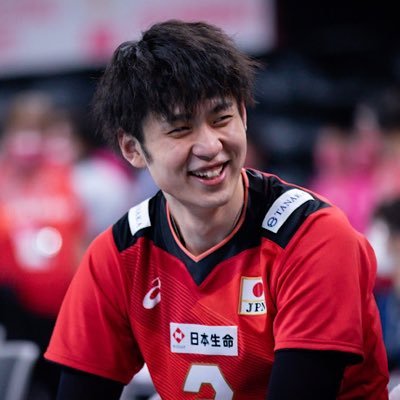
Kendo is more than just a sport; it is an activity that greatly contributes to the physical and mental growth of children.
In this article, we will explain in detail the characteristics of children who particularly grow through Kendo, and how to foster such growth.
We explore how Kendo affects children and what kind of environment and instruction best supports their development.
We provide practical advice and specific instructions to help parents and instructors help their children succeed in Kendo and learn more from the experience.
We hope that this information will be a valuable guide for children as they walk the path of Kendo.
目次
- 1 Introduction: Children’s growth potential in Kendo
- 2 The importance of basic skills and their educational methods
- 3 Preparation of Kendo practice environment
- 4 Kendo teaching method that fosters mind, technique, and body
- 5 Tips for enjoying Kendo as a competition
- 6 The importance of learning from mistakes in Kendo
- 7 Role of parents and instructors
- 8 Conclusion: All-round growth of children through Kendo
Introduction: Children’s growth potential in Kendo
Kendo is more than just a martial art; it is an educational tool that comprehensively develops children’s physical, mental, and social skills.
This section explores how kendo affects children and what characteristics make children more likely to be successful in kendo.
The impact of Kendo on children
Kendo provides many benefits to children, including improving physical strength, developing concentration, and developing patience.
Through Kendo practice, children learn self-discipline and build a foundation for leadership.
Kendo’s culture of etiquette and respect also helps children grow into people who are respected and trusted in society.
By emphasizing process over winning or losing, Kendo teaches the importance of continuous self-improvement without fixating on results.
What successful children have in common
Children who practice Kendo successfully have several things in common.
For one thing, they are not afraid of challenges and are willing to try new techniques and difficult movements.
What they also have in common is that they view failure as part of experiential learning and use it as fuel for growth.
Successful children also have a strong ability to accept feedback from their instructors and peers and use it to improve their own skills.
Furthermore, what is important in Kendo is continuous effort and maintaining your passion for Kendo.
These characteristics will give children the strength not only to learn Kendo but also to overcome any difficulties they may face in the future.
In this section, we have introduced how Kendo has a positive impact on children, and what characteristics children have that are successful in Kendo.
Understanding how children grow through Kendo is extremely important for both instructors and parents.

The importance of basic skills and their educational methods
Basic techniques in Kendo are the foundation for improvement.
Here we explore why basic techniques are so important in Kendo and how to effectively teach them to children.
Why are the basic techniques of Kendo important?
The basic techniques of Kendo are the foundation for all advanced techniques.
Correct posture, accurate strikes, and proper foot movement are essential to the effective practice of Kendo.
A strong basic technique will improve the accuracy of your moves and improve your reaction time in a match.
In addition, by learning the correct techniques, you can minimize the risk of injury, allowing you to continue practicing Kendo safely over a long period of time.
Learning the basics plays a big role not only in Kendo, but also in developing mental maturity and self-discipline.
Effective ways to teach your child the basics
When teaching children the basics of Kendo, it is important to create an environment where they can learn while having fun. Here are some effective teaching methods:
- Make it a game : Children often learn through play, so practicing basic skills in a game format can be a good response. Examples include games that use specific techniques to hit a target, and relay games that compete with foot movements.
- Teach in stages : Giving children too much information at once can be confusing, so an effective method is to focus on one skill and move on to the next once they have mastered it.
- Use lots of visual demonstrations : Children learn a lot from visual information, so it’s a good idea to teach techniques by demonstrating them. It’s also a good idea to use videos to demonstrate techniques and explain exactly what’s right and what’s wrong.
- Provide positive feedback : It’s important to actively praise children when they learn correct skills. This allows you to approach your practice with confidence.
By understanding the importance of Kendo’s basic techniques and incorporating these effective teaching methods, children will not only learn technical skills, but also the fun and spiritual nature of Kendo.

Preparation of Kendo practice environment
When learning Kendo, creating a good practice environment is extremely important.
A suitable practice area not only improves technique, but also contributes to safety and ease of access.
This section details how to create the ideal Kendo practice environment.
Building an ideal practice environment
When preparing a Kendo practice environment, the following factors are important:
- Appropriate space and equipment : Kendo practice halls (dojos) need to be large enough for exercise. It is also desirable to have tatami mats or special mats. This makes it less slippery and reduces the risk of injury in the event of a fall.
- Proper lighting and ventilation : A well-lit, well-ventilated environment is important not only to improve the quality of practice, but also to keep participants healthy. Kendo in particular requires concentration, so proper lighting should be taken into consideration.
- Safe Equipment : It is recommended to install protective pads on walls to protect Kendo practitioners from possible collisions during practice. It is also important to ensure that safety equipment such as emergency exits and fire extinguishers are in place.
Practice location safety and accessibility
Safety and accessibility are the most important considerations when choosing a Kendo practice location:
- Accessibility : Ideally, the practice location should be easily accessible to participants. It is desirable that children have safe access by public transport or bicycle, especially if they are commuting on their own.
- Ensuring safety : The practice area, including the surrounding environment, should be safe. For example, being away from busy roads, having good lighting, and being located in a safe area are all taken into consideration.
- Access for people with disabilities : Practice locations should be barrier-free to facilitate access for people with disabilities. This includes wide entrances, handrails and suitable toilet facilities.
Creating an ideal practice environment not only improves your Kendo skills, but also directly leads to your motivation to continue practicing Kendo.
A safe and accessible environment provides a foundation for Kendo practitioners to continue practicing over the long term.

Kendo teaching method that fosters mind, technique, and body
Kendo is a martial art that aims to develop the three elements of “mind, technique, and body” in a well-balanced manner.
In this part, we will explore how to balance the mind, technique, and body, as well as teaching tips to encourage spiritual growth.
How to balance mind, technique, and body
In Kendo instruction, it is important to treat the following three elements equally:
-
Mind (Spirit) : Education that emphasizes courtesy, respect, and patience is essential for the spiritual development of Kendo. By encouraging appropriate behavior inside and outside the dojo and instilling a respectful attitude, we encourage spiritual growth. Additionally, taking time for self-reflection and meditation can deepen your self-understanding and inner peace.
-
Techniques : In terms of technique, it is basic to teach students step by step, from basic movements to advanced techniques. We will carefully teach each technique so that you can master the correct form and movement. Repeated practice and instruction tailored to individual progress are the keys to improving technique.
-
Physical strength : Improving physical strength is also an important element of Kendo. It is recommended to incorporate physical exercises to improve physical strength and special training to increase endurance and strength. A healthy body supports better technique acquisition and reduces the risk of injury.
Tips for teaching to encourage spiritual growth
To encourage spiritual growth, it is effective to incorporate the following elements into your Kendo training:
-
Goal setting : Help children set short- and long-term goals and value the process of working toward them. Mental strength is developed by overcoming difficulties encountered in the process of achieving goals.
-
Providing success experiences : By accumulating small success experiences, we build confidence and encourage motivation to take on further challenges. It is important to share success stories with positive feedback.
-
Learning from failure : Turn failure into a positive learning experience by talking about what you can learn from it rather than blaming it. This will foster the courage to take on challenges and the ability to move forward without fear of failure.
Through these teaching methods, Kendo encourages the balanced development of children’s minds, skills, and bodies, thereby supporting their holistic growth.

Tips for enjoying Kendo as a competition
Kendo can be enjoyed as a competition, and it not only helps you develop your skills, but also develops a sense of enjoyment.
Here we will explain how to enjoy Kendo as a competition and how children can stay motivated.
How to enjoy Kendo as a competition
In order to enjoy Kendo as a competition, the following points are important:
- Build friendships and community : Kendo matches and practices are a great opportunity to bond with your peers. Relationships with friends who are working towards the same goal are a big factor in making the competition more enjoyable.
- Emphasize participation and experience : It is important to be prepared to enjoy the experience of participating in games and practices, without worrying about winning or losing. It is important to learn new things from each match or performance and enjoy the experience gained.
- Understanding culture and tradition : Learning about the history and culture of Kendo is one way to deeply enjoy Kendo as a sport. By experiencing the spirit and philosophy of Kendo, you will not only learn the techniques, but also gain a sense of spiritual fulfillment.
How to keep kids motivated
To help children stay motivated, the following approaches are effective:
- Goal setting : It is effective to set achievable short-term and long-term goals for each child and provide appropriate recognition and rewards for each achievement. Build confidence in the process of achieving your goals and motivate yourself to take the next step.
- Providing Positive Feedback : By consistently providing positive feedback for good efforts and progress, children can increase their self-efficacy and keep them motivated to continue practicing Kendo.
- Providing a fun practice environment : Creating an environment where practice feels fun will ensure children’s continued engagement. Practice that incorporates games, competition, and teamwork not only makes Kendo fun, but also motivates students to improve their skills.
By using these tips, you can sustainably increase your children’s motivation while enjoying competitive kendo.
Kendo has more value in the process of participating and growing than just winning or losing.

The importance of learning from mistakes in Kendo
Failure in Kendo provides valuable learning opportunities not only for improving technical skills, but also for personal growth.
Taking on challenges without fear of failure and applying the lessons learned from that experience will lead to spiritual maturity through Kendo.
Psychological support to take on challenges without fear of failure
Psychological support is extremely important in order to be able to take on challenges without fear of failure during Kendo practice and competitions. You can help children in the following ways:
- Providing a safe environment : Create an environment where children feel safe and supported so they can try new techniques and tactics without fear of failure. Cultivate a culture that embraces failure as a necessary step in growth, rather than condemning it.
- Feedback from failure : Provide specific and constructive feedback to turn failure into a concrete learning opportunity. By providing clear guidance on what went wrong and how they can improve, children have concrete goals for their next challenge.
- Promoting positive thinking : We provide training and words that promote positive thinking to help you maintain a positive attitude even after experiencing setbacks. Through this, children will be able to have strong mental strength even in the face of setbacks.
Learning and growing from failure experiences
Failure experiences play an important role in all learning processes, not just Kendo. The main benefits of learning from failure are:
- Risk-taking ability : Understands the value of taking risks by trying new techniques and tactics. By experiencing that taking risks can sometimes lead to great rewards, you can face new challenges with confidence.
- Improve self-awareness : Recognizing your weaknesses and areas for improvement is the first step in improving your skills. The more self-awareness you develop through failure, the more you can develop a plan for how to overcome it.
- Continuous learning : Continuous learning without fear of failure is an important skill that is useful not only in Kendo but in all aspects of life. Lessons learned from failure are essential to personal growth and development.
Failure in Kendo is not just an obstacle, but a valuable resource for growth and development.
By deepening this understanding, children will be able to proactively approach not only the path of Kendo, but also all challenges in life.

Role of parents and instructors
In Kendo training, parents and instructors play an important role in supporting the growth and success of children.
Their support and guidance provides the foundation for children’s continued growth in Kendo.
Types of support that parents should provide
Parents are expected to provide a variety of support to help their children learn Kendo while having fun:
- Emotional support : It is important to provide emotional support as children experience challenges and failures. By offering words of encouragement and showing understanding, we support children so that they can continue to take on challenges with confidence.
- Physical support : Physical support is also important, such as providing Kendo equipment and transportation. Substantial support to participate in kendo practices and competitions is the foundation for continued activity.
- Ethical Support : We teach children the spirituality of Kendo by providing ethical support that encourages good behavior and fair competition. We will guide you to understand the values of Kendo and apply them to your daily life.
Qualities and skills required for leaders
Kendo instructors are required to have the following qualities and skills:
- Specialized knowledge : You must have a deep understanding not only of the technical aspects of Kendo, but also of its history and culture. This allows us to fully convey the teachings of Kendo.
- Communication Skills : Clear and understandable communication is essential to effective teaching. Must be able to communicate appropriately with children and their parents and accurately convey the intent of the instruction.
- Ability to bring out motivation : To be a leader who can bring out the hidden potential in children and increase their motivation. This means helping children achieve self-transcendence through Kendo practice.
Together, these roles and supports allow children to make the most of their Kendo training and grow both technically and spiritually.
Working together and providing consistent support between parents and instructors is the key to a child’s success in Kendo.

Conclusion: All-round growth of children through Kendo
Kendo is more than just an athletic competition and can have a profound impact on the lives of the children who participate.
This section delves into the long-term impact Kendo has on children and the unified approach to success.
The long-term impact that Kendo has on children’s lives
Kendo training provides children with many lifelong skills.
Kendo helps develop mental qualities such as self-discipline, respect, patience, and concentration.
These traits directly contribute to better school performance, social interactions, and future workplace success.
Kendo also promotes physical health and activity, laying the foundation for healthy lifestyle habits.
The teachings of politeness and decorum in Kendo help children grow into more responsible adults.
A unified approach to support your path to success
For children to be successful in Kendo, a unified approach is needed between parents, instructors, and the children themselves.
Parents are responsible for providing emotional and physical support and creating an environment where children can concentrate on practicing.
Instructors should not only focus on the technical aspects of Kendo, but also on the spiritual aspects that help develop character.
Furthermore, children are expected to independently pursue their own learning and growth.
This kind of joint effort allows children to grow in Kendo and apply that experience to other aspects of their lives.
Through Kendo, children not only learn techniques, but also acquire values and skills that will be useful throughout their lives.
This all-round development that Kendo training provides forms the basis for children to function as useful members of society.





